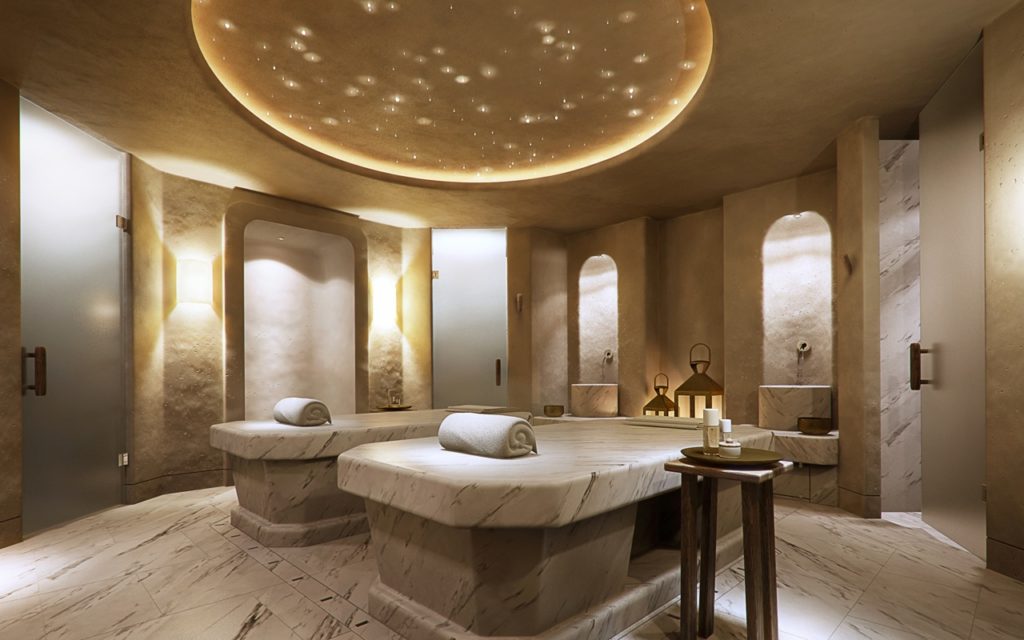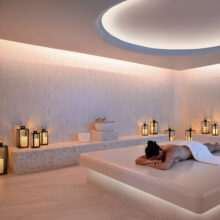What is a Hammam?
- Published: Wednesday, October 3rd 2018
- in Living Well

The hammam, also known as the Turkish hamam or Turkish bath, is the Middle Eastern variant of a steam bath, which can be categorized as a wet relative of the sauna.
Although the first hammams originated in Arabia, and bath culture was a central part of Roman life, Turkey popularized the tradition (and is most often associated with it) by making hammams available to people of all statuses.
What is it Like?
The hammam ritual is rather simple, but it does involve several steps – all aimed at cleansing and relaxing – which many modern-day hammams still utilize.
Typically, the treatment lasted a set period of time, but visitors were free to lounge in the cooling areas for as long as they liked.
- Relax and Prepare
As you enter the camekan, or entrance room, there are areas for changing and a place to have a cup of tea or a cold drink before or after the bath.
- Adjust to the Warmth
Before you encounter water, the tellak (staff member) will bring you to a transition area, the iliklik, or intermediate room, where you receive your towels and adjust to the heat.
- Full Body Scrub and Soaking
From there you enter the hararet, or hot room, which houses the large marble belly or navel stone. Bathers, arranged on marble slabs around the fountain, alternate basking in the high humidity and being vigorously–and thoroughly–scrubbed by an attendant. Following the scrubbing, there is application of special soap (including shampoo, if requested).
- Rinse and Massage
After the scrubbing, usually there is a designated area for a rinse and then you can also choose to have a massage to top off the experience.
What Else Should I Know?
Level of Comfort
While a hammam treatment is best described as “full body,” neither men nor women are scrubbed in any of their private areas.
“In modern hammams, the therapists are trained, and if anyone wants to keep covered, they are able to do so,” says Ellis.
“The therapists drape you in a similar manner to how a Vichy shower is done.”
The Privacy Factor
Historically, like with all forms of public bathing, a hammam offered cleansing to the masses, and they were not often steeped in luxury. Privacy was discarded in favor of efficiency and cost, although there were separate rooms available for men and women.
“Like any sort of public bathing around this time, the poor were washed in public while the wealthy enjoyed private spaces,” says Don Genders of Design for Leisure, an architecture firm that specializes in hammams.
“It’s the private spaces that most spas are recreating today.”
To find a hammam near you, search Spafinder’s listings.










